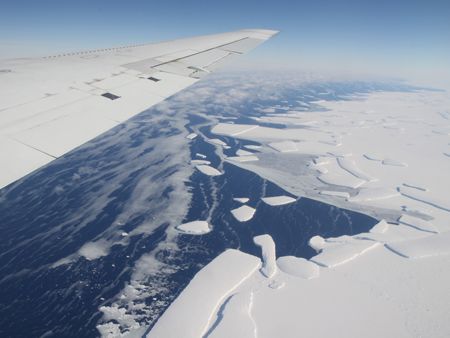by Larry
May, 2014West Antarctic Ice Sheet UnhingedThe results, as announced in the journal "Science," on 5/16/14, include that a key Antarctic glacier, Thwaites, is deteriorating and will disappear. This is significant since the glacier acts like a linchpin or stopper holding back much of nearby glacier flow toward the sea. In other words, once Thwaites Glacier goes, the rest of the West Antarctic Ice Sheet is sure to follow.
The good news is that such eventual repercussions are not anticipated to climax for a couple centuries or more. Unfortunately, most of the changes from global warming have been happening faster than scientists had predicted. Moreover, even earlier, lesser extents of sea level rise are likely to be disruptive. Flooding of low-lying areas will be more common. Some regions will be inundated with only a few inches of further sea level ascension. It is unrealistic to suggest that cities are now at major hazard due to this development. However, it helps put things in perspective to note areas of present population that would sooner or later be destroyed. In the U.S. alone, coastal areas involving over 12,000,000 of our current population would be under water. Parts or all of NYC, NY, Miami, FL, Norfolk and Virginia Beach, VA, New Orleans, LA, and Stockton, CA, would be most affected if the rise were to happen immediately. Increasingly too, coastal area fresh water marshes will become more brackish, threatening their prior fauna and flora. As such estuary regions between the sea and more populated real estate lose viability, they will be vulnerable to storms. With the disappearance of these buffer areas, human agriculture, urban centers, and other development further inland will be increasingly jeopardized. Primary sources: -Past the Point of No Return. Nell Greenfieldboyce in All Things Considered - NPR; May 12, 2014; -West Antarctic Ice Sheet Collapse is Underway. Hannah Hickey in University of Washington; May 12, 2014; -What Does the U.S. Look Like After Three Meters of Sea Level Rise? Ben Straus in Scientific American; May 14, 2014. |
